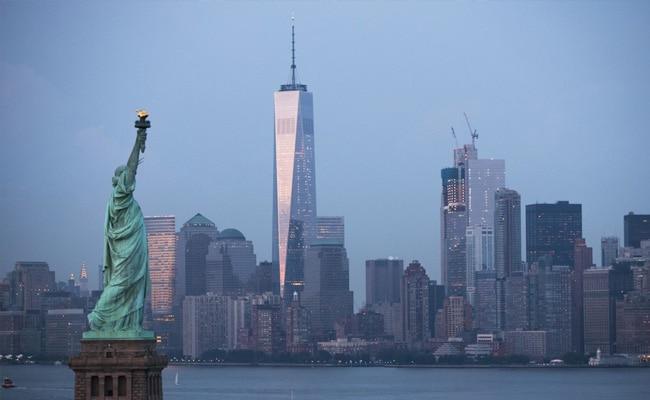Visiting the United States is about to get considerably more expensive for Indian travelers. Whether you’re dreaming of a Grand Canyon road trip, heading overseas for studies, or planning a long-term work stint—get ready for a substantial bump in visa fees. Starting in 2026, Indian applicants will be required to pay a new Visa Integrity Fee, joining a list of other surcharges, pushing the total cost of visas well beyond current levels.
What the New US Visa Integrity Fee Means
On July 4, under what’s now being called the ‘One Big Beautiful Bill,’ US President Donald Trump signed legislation that introduces a non-refundable $250 Visa Integrity Fee to most non-immigrant visas. This move—which has already stirred debate online and among Indian communities abroad—marks a massive change in how visa costs are structured and enforced.
What Visa Types Are Affected?
The new fee applies broadly to most common visa categories:
- B-1/B-2: Tourist and business visas
- F and M: Student visas
- H-1B: Work visas
- J: Exchange visitor visas
Only diplomatic visa categories—A and G—are exempt from this change.
Timeline of Events
This wasn’t a sudden development. The policy will take effect in 2026, giving applicants a short window to plan accordingly. That said, not everyone is convinced this timeline offers enough time—or clarity.
“The new Visa Integrity Fee is designed to promote compliance and ensure our borders remain secure,” said a Department of Homeland Security official. “Visitors who follow the rules can even receive a refund.”
But the policy doesn’t offer blanket refunds. The rules are strict, and only those who strictly adhere to their visa terms might see that money back.
Fee Breakdown and Cost Hike
Let’s crunch the numbers. Here’s how the fee hike shakes out for a typical Indian tourist:
- Current B-1/B-2 visa cost: $185 (~Rs 15,800)
- Visa Integrity Fee: $250 (~Rs 21,400)
- I-94 and ESTA charges: $24 and $13
Total cost: $472 (approx. Rs 40,502)
That’s more than two and a half times the current price. For students applying for F or M visas or tech professionals on H-1Bs, the increase is just as sharp, climbing well into the Rs 40,000+ range depending on their specific category.
Refund Conditions: Can You Get Your Money Back?
Technically, yes—but only under very specific conditions. To qualify, you must:
- Leave the US within five days of visa expiry
- Legally extend your visa
- Change immigration status while complying with all visa terms
Failing to follow the rules or overstaying makes you ineligible. And perhaps that’s the whole point—the fee is as much about enforcement as it is about finances.
Why Is the US Doing This?
This move is part of a broader clampdown framed around national security and border integrity policies. The US government sees the fee as a sort of security deposit, encouraging lawful behavior among all foreign visitors. The Department of Homeland Security will manage the refund criteria and may adjust the fee annually based on inflation via the Consumer Price Index (CPI).
And there’s more tucked into Trump’s nearly 900-page ‘Big Beautiful Bill’ — a controversial 1% tax on remittances will also hit immigrants, including many Indians, making it more costly to send money back to their families in India.
Official Statements Raise More Questions
While DHS officials describe the fee as a compliance tool, critics say it’s yet another hurdle for legal immigration pathways. Some immigration lawyers believe the policy walks a fine line, and questions about how the refund system will be monitored are already surfacing.
“It sounds straightforward on paper,” one immigration advocate mentioned, “but implementation details will matter. Who verifies compliance? What about visa holders in gray areas—students waiting on extensions, or workers in transition periods?”
Community Response: Worry and Confusion
The Indian community isn’t exactly cheering the news. Students, especially, are feeling the heat. With many already battling high tuition costs and living expenses in the US, an extra Rs 20,000 or more for a visa might tip the balance.
Tech professionals on H-1Bs aren’t spared either. For Indian IT firms that send hundreds overseas each year, the added cost becomes significant, with possible implications on future project placements or budgets.
Social media has already seen a spike in comments expressing everything from frustration to confusion. “This fee feels punitive,” said one Twitter user. “Like I’m being precharged for the assumption that I might break the rules.”
What’s Next?
Until 2026, the existing fee structure remains. But don’t count on any policy reversals or reduced costs. If you’re planning to visit the US after that, build the new fees into your travel budget early. The DHS has said it will publish more guidance closer to the rollout, but whether that will ease concerns is unclear.
The introduction of the Visa Integrity Fee marks another turning point in US immigration policy—one focused more on enforcement and revenue than openness. While it remains to be seen how this plays out in practice, one thing’s for sure: for Indian visa applicants, the US journey just got a lot more expensive—and complicated.

